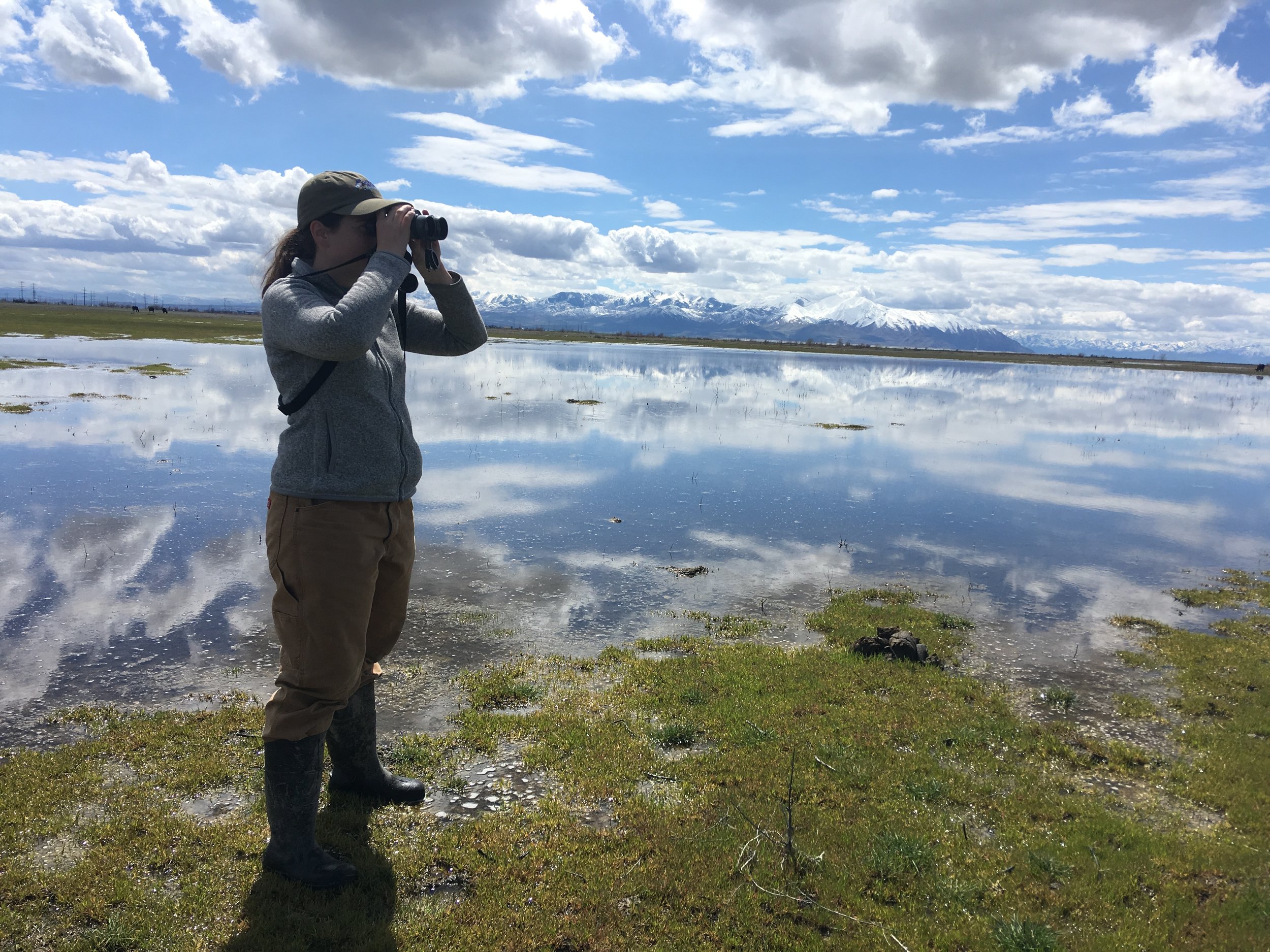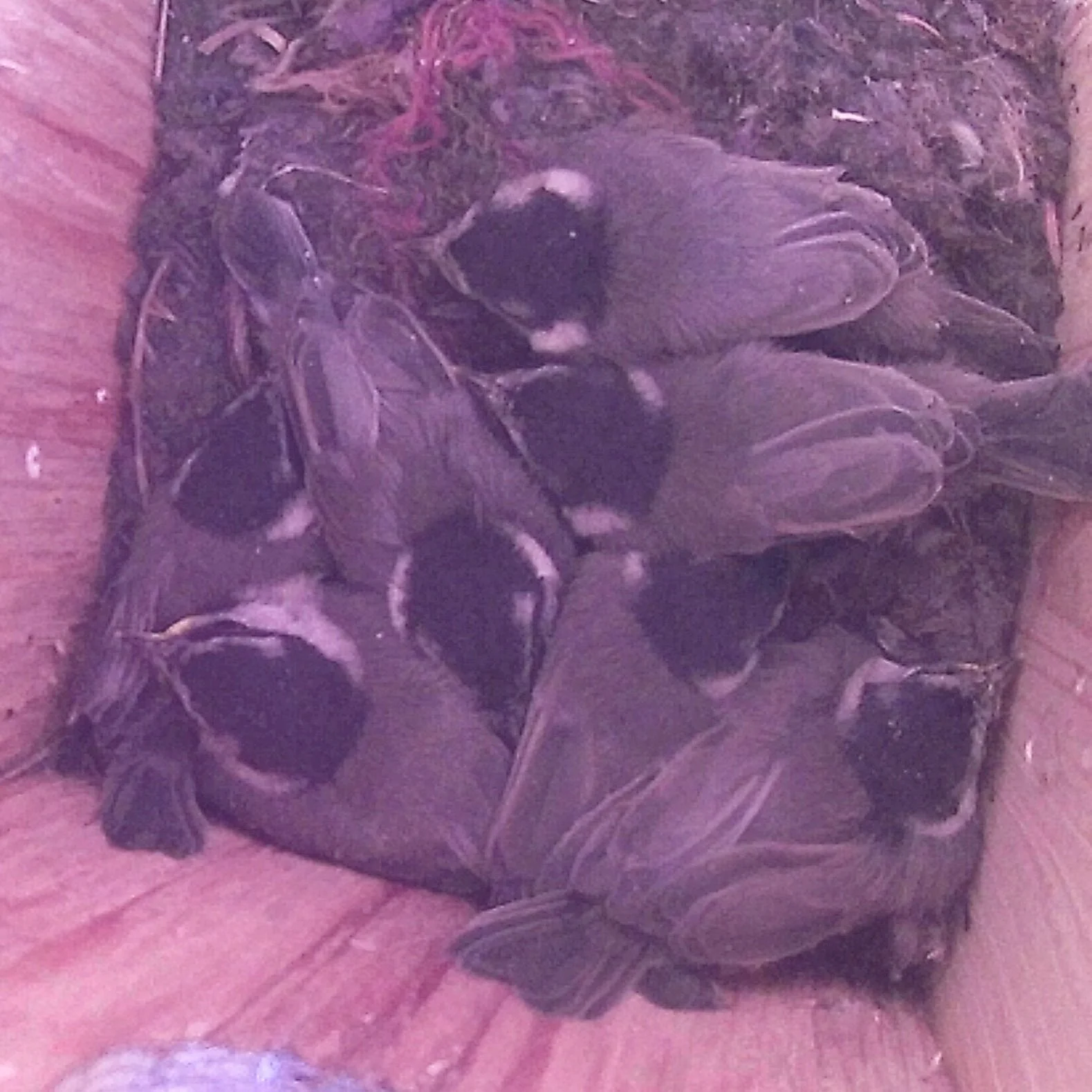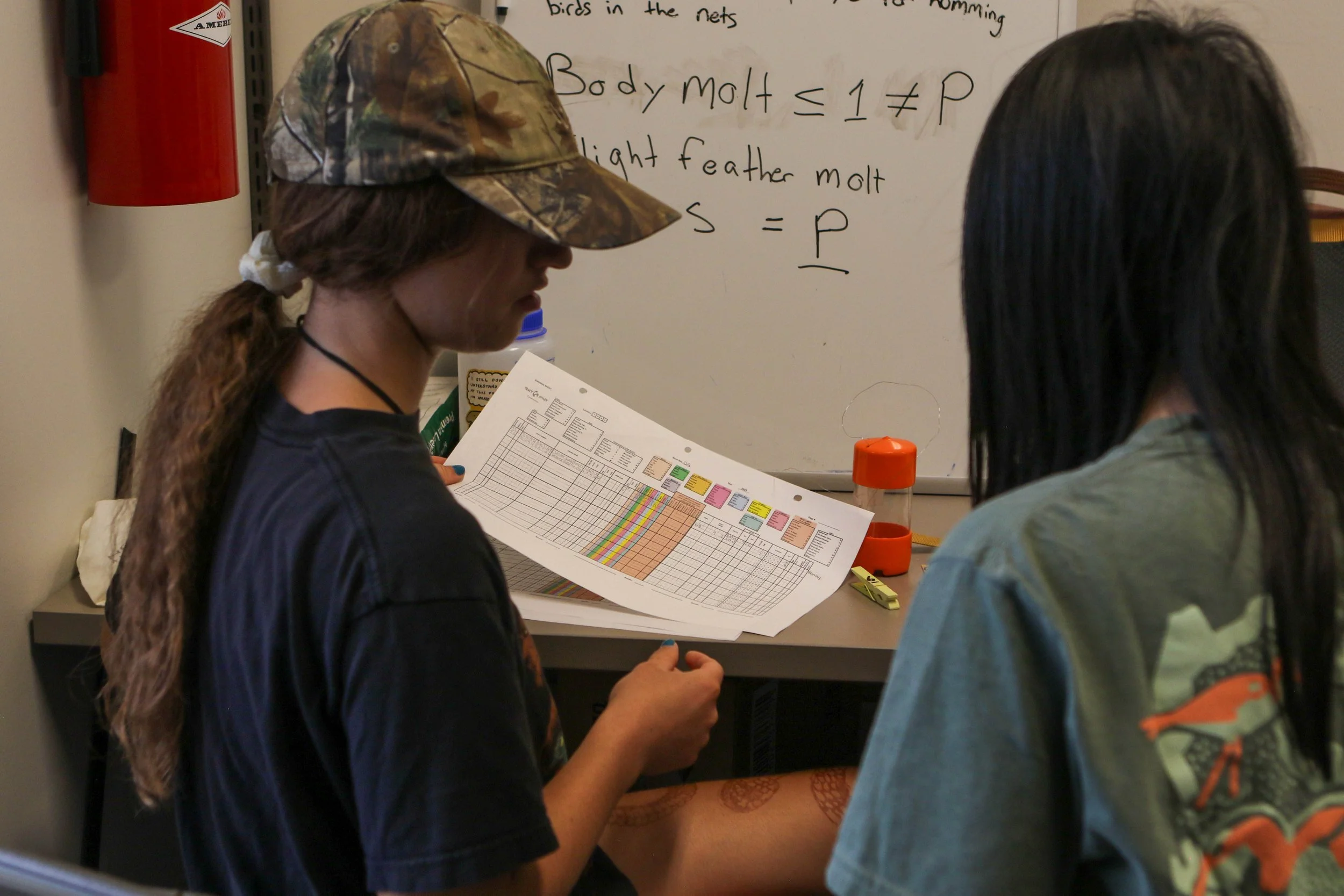Become a community scientist
Community science (also called citizen science) is a joined effort between volunteers (you) and scientists (us) to study the natural world. Learn about our project opportunities below, and fill out the application to get involved!
Questions? Email us at conservation@tracyaviary.org
Breeding Season Surveys (BSS)
As part of our year-round bird monitoring program, we train community scientists to conduct breeding season point count surveys at 12 sites around Salt Lake. These surveys help inform bird-friendly restoration, management, and land conservation. We welcome birders of any level, and we will teach participants bird identification by sight and sound, data recording skills, and everything else they need to know to conduct bird surveys.
Recruiting is in progress! Email conservation@tracyaviary.org for more information or to get involved.
Non-breeding Season Surveys (NBS)
During the non-breeding season (August through February), we visit each of the 12 sites once per month to do a non-breeding survey bird walk. A staff person leads a small group of volunteers on a walking survey through our site, identifying and counting birds. These surveys help us monitor bird populations and get a feel for bird health around the Wasatch front, while also providing some great birding time!
Nest Box Monitoring
New for 2025, Tracy Aviary Conservation is looking for volunteers to join our team for nest box monitoring surveys at the Nature Center at Pia Okwai and along the nearby Jordan River trail. During March – July, community science volunteers will conduct a 5-minute behavioral observation and check the contents of each box with a pole-mounted camera. This will help us learn more about the breeding behaviors of birds in our area and track their nest success.
Snowy Plover Project
Snowy Plovers are declining across their range, and the interior population depends on Great Salt Lake as a critically important breeding site. The south shore of Great Salt Lake is a popular recreation area, and disturbances in this region may be negatively impacting the Snowy Plovers trying to nest there. This project seeks to understand if and how this is happening, so we can develop solutions to conserve this charismatic little bird.
Salt Lake Avian Collision Survey (SLACS)
This project investigates the interaction between light pollution and bird-building collisions. A majority of migratory birds travel at night, and light pollution can disorient them and cause them to fly into bright urban areas where they collide with windows before finding their way back out again. Volunteers conduct early morning surveys around buildings in downtown Salt Lake City looking for birds that have collided with buildings. Injured birds are taken to a wildlife rehabilitation center, and dead birds are collected to be donated to the Natural History Museum of Utah.
BIRD BANDING
The Tracy Aviary Bird Banding project started in 2024. We band with mist nets—a technique where we capture wild birds using fine, nearly invisible mesh nets suspended between poles in areas of frequent bird activity. When birds fly into these nets, they fall safely into pockets created by the loose netting. We then collect vital data including the bird’s species, age, sex, size, weight, and overall health condition before attaching a small, numbered aluminum band to the bird’s leg.*
Sign Up For Bird Banding Training
*All banding is being conducted under a federally authorized Bird Banding Permit issues by the U.S. Geological Survey’s BBL.
North American Breeding Bird Survey (BBS)
The North American Breeding Bird Survey (BBS) is the nation’s largest and longest running community science project. Since it began in 1966, BBS has provided important information on avian population trends across the continent; it is also instrumental for statewide bird conservation and management in Utah. To participate, experienced birders sign up to complete a BBS survey route one time per year during the breeding season. Volunteers drive a 25 mile route and with 50 stops where they do a 3-minute point count survey. Tracy Aviary helps with coordination and recruitment of new volunteers to the Breeding Bird Survey (BBS) in Utah as part of a partnership project with the Utah Division of Wildlife (UDWR).

























